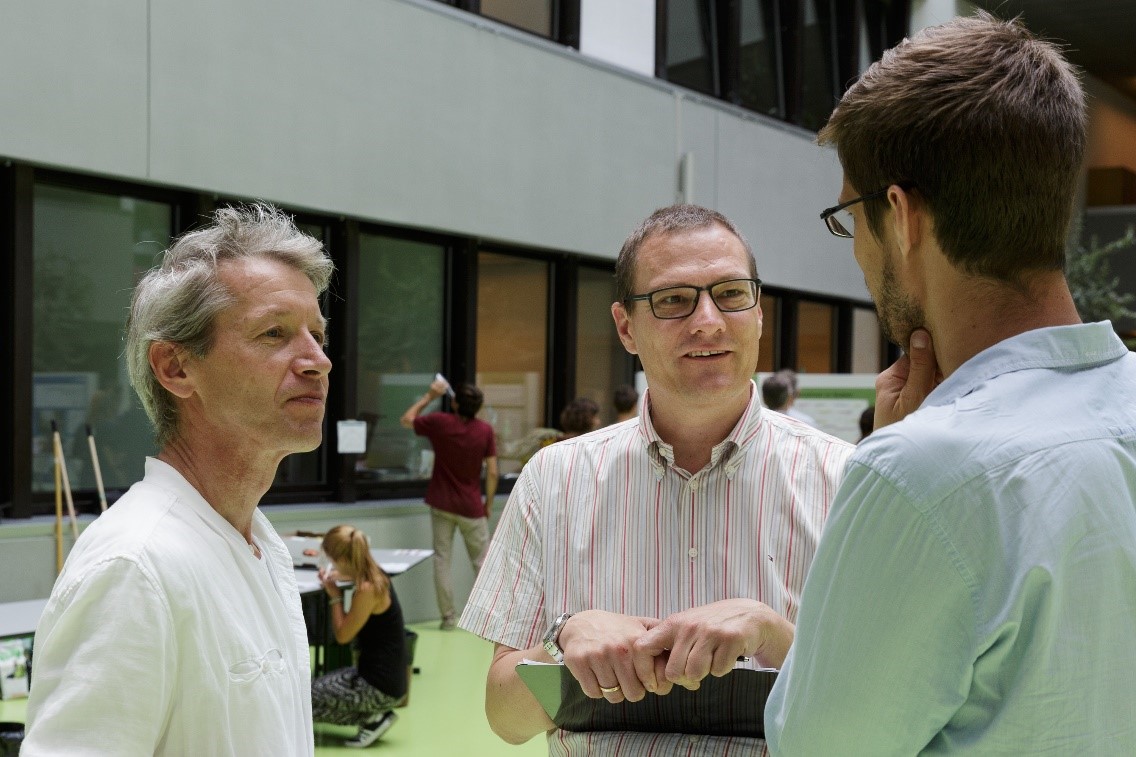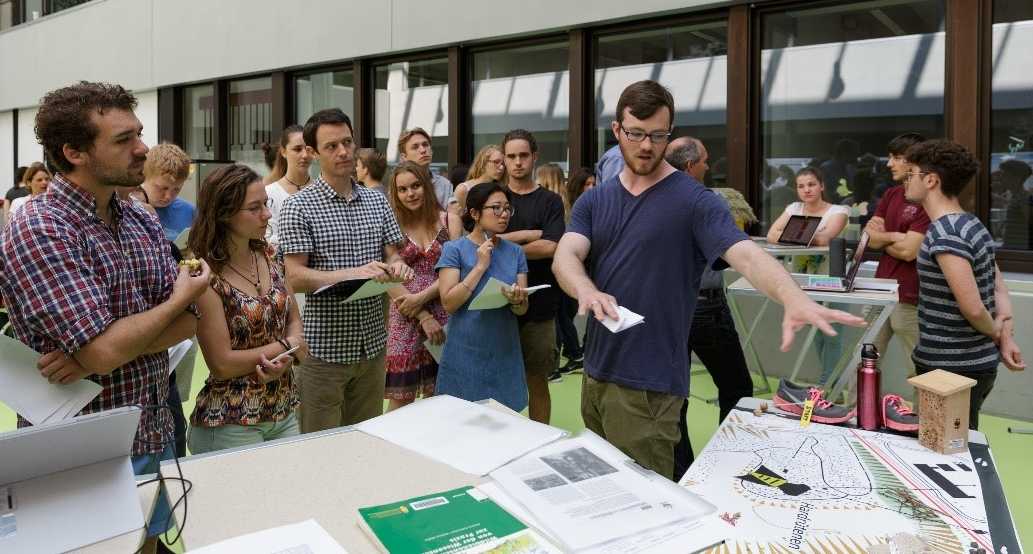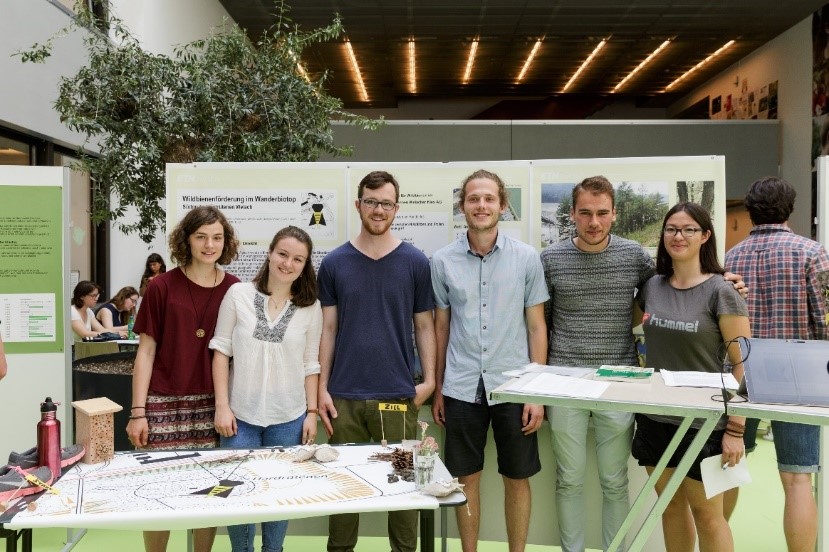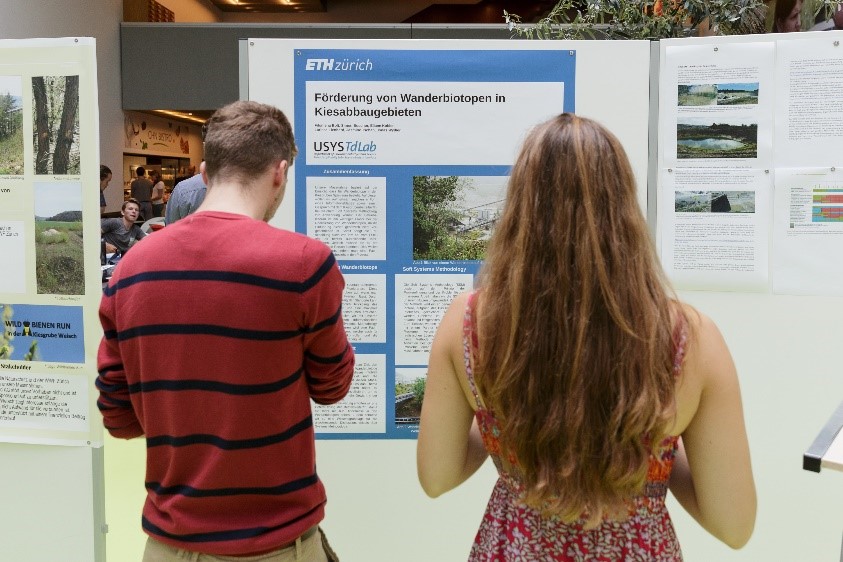A glance at the gravel plant – an experimental case study
- News
- D-USYS
- D-USYS
- Environmental sciences
In the newly structured course, «Environmental Problem Solving», roughly 150 environmental science students are concerned with a specific sustainability problem. In doing so, they learn to analyze complex topics, create suggestions for solutions and, above all keep their wits about themselves.
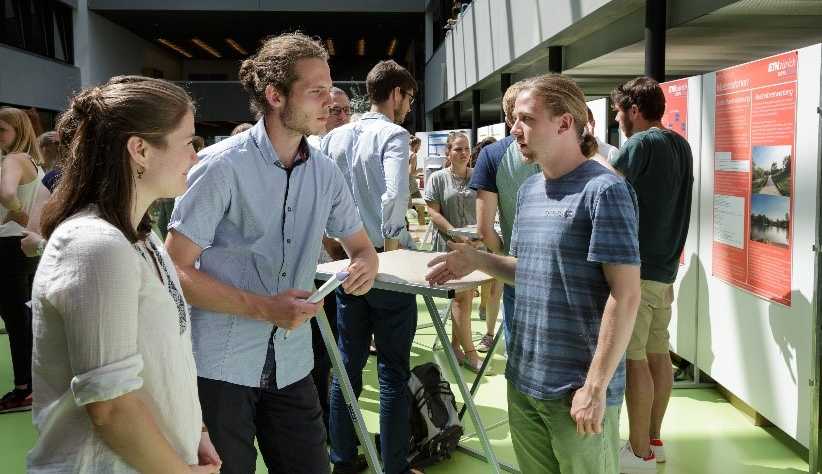
A gravel plant? At first there were some confused faces during the initial presentation of the subject for this year's case study for the course, «Environmental Problem Solving». The students should work on a case study on the gravel pit in Weiach in the canton of Zurich for about half a day per week, for one whole year. The subject «Environmental Problem Solving» is a central element of the new construction for the environmental sciences major, and would be equivalent to mathematics or chemistry with regard to grades. In the first semester, the students compile a comprehensive case file, which divides the need for knowledge and action into six partial analyses. In the second semester, the focus is on defining the problems and developing realistic solutions.
Solutions become a reality
«Problems have always been analyzed using environmentally scientific methods and brought together with their results within the subject of Environmental Systems Science» says Christian Pohl, co-director of the D-USYS Transdisciplinarity Laboratory (TdLab). What is new is that now solutions are actually being put into reality. Pohl is one of the four permanent lecturers of Environmental Problem Solving and has contributed to the development of the course as a long-term transdisciplinary case study. Pohl says, «The case study is transdisciplinary, because it transcends the boundaries of the different science systems.»
Intense supervision
The students spend most of their time working independently in tutored groups. Project partners from business, administration and civil society give critical feedback during the entire project. An important partner from this year's case study was of course the gravel plant itself. «The students clearly challenge us,» says Patric van der Haegen, Head of Development at Eberhard Enterprises. Through the cooperation with the students, the company was able to take a close look in the mirror at themselves as operators of the gravel plant. «It's not as if we've never been concerned about sustainability, but working with the students gave us important stimuli for our public relations and in some situations, we actually benefitted from their new ideas.» Besides Patric van der Haegen, Wolfang Wetter from the Office for Spatial Planning in the Canton of Zurich, Kaspar Spörri from the Office of Landscape, Agriculture and Environment, Rainer Kündig from the Swiss Geotechnical Commission, and Andreas Hasler from Pro Natura gave their inputs during the project.
«The process was not always fun»
There were also plenty of setbacks. «Our experience with the subject of Environmental Problem Solving was often frustrating during the first six months» reports Mischa Aeschlimann, a student in the second semester. Discussions in the group took a lot of valuable time, without much to show for it. He did however learn to weigh the different interests of the stakeholders and come to a compromise that was acceptable for everyone. For example, during data collection, it was soon clear what sort of data was missing, or what the important interests for the surveyed stakeholders were.
What’s next?
Out of the variety of issues, the group of Mischa Aeschlimann concentrated on the habitats for insects caused by the gravel mining. In Switzerland, for example, there are about 615 species of wild bees, of which around half are endangered. With relatively simple measures to be implemented, the now marginal areas of the gravel pit could be upgraded for wild bees: more nesting places should be created and fodder crops should be sowed. The group has also already considered how to finance these measures, however this will not be necessary for the time being. The Canton of Zurich and the gravel plant have agreed to improve habitats for wild bees, and are following the instructions from the ETH students very closely. «In a year’s time, we will visit the area again», the group of students rejoiced, «and see what has actually become of our plans». With that, the case study «Kiesgrube Weiach» has officially been concluded.

